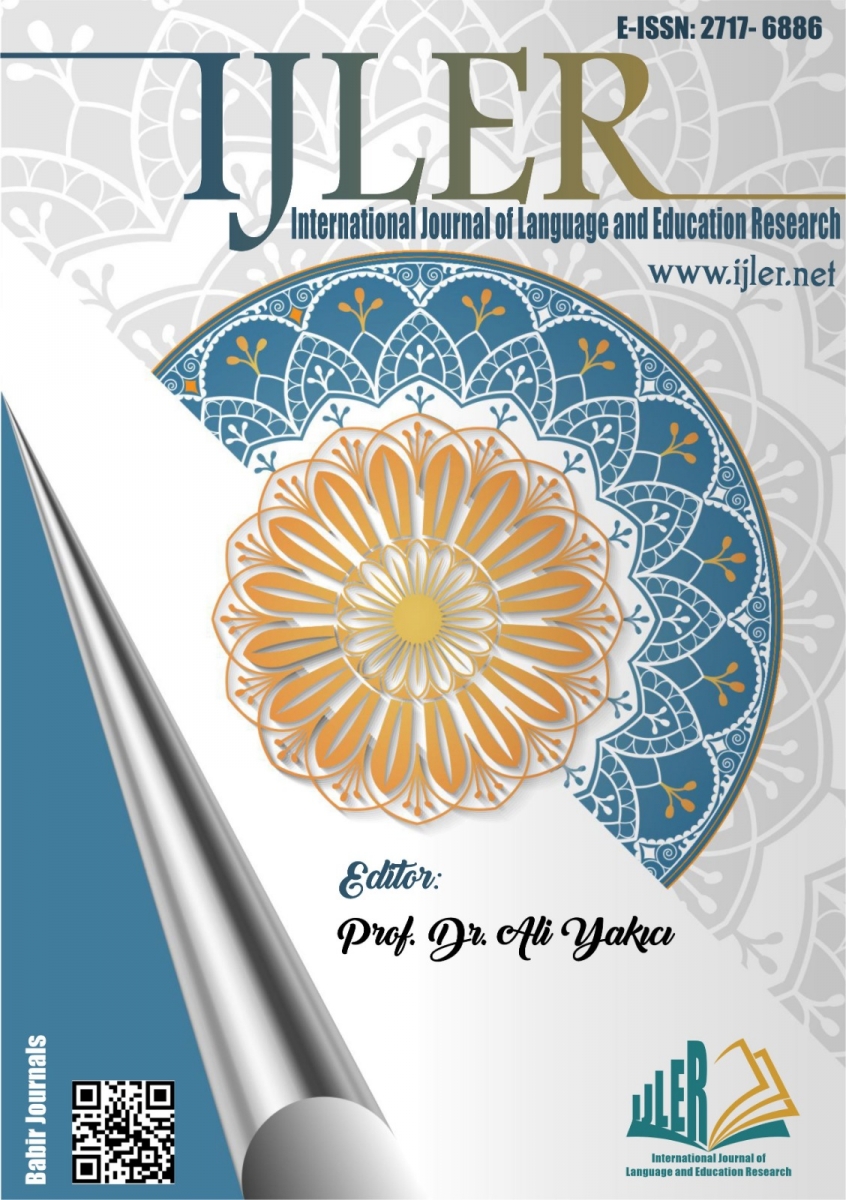Original article | International Journal of Language and Education Research 2022, Vol. 4(1) 23-41
Turkish Teachers' Views On Cyberbullying
Serap Akay
pp. 23 - 41 | DOI: https://doi.org/10.29329/ijler.2022.587.2 | Manu. Number: MANU-2308-17-0002
Published online: April 30, 2022 | Number of Views: 6 | Number of Download: 201
Abstract
The aim of this research is to determine the opinions of Turkish teachers about cyberbullying. The study group of the research consists of Turkish teachers selected by random sampling, who are studying in a Turkish and Social Sciences Department Turkish Teaching master's program in a state university. The case study design, which is one of the qualitative research designs, was used in the research. In order to analyze the data of the research, descriptive analysis method, one of the qualitative analysis methods, was used. A semi-structured interview form was used to collect the data of the research. In order to increase the validity and reliability of the research, direct quotations were made from the opinions of Turkish teachers about cyberbullying. According to the results of the research, it was seen that Turkish teachers have general knowledge about cyberbullying. It was stated that legal sanctions should be applied to detect and prevent cyberbullying. The Turkish teachers participating in the research stated that the school and family should cooperate in order to combat cyberbullying.
Keywords: Siber zorbalık, Türkçe eğitimi, lisansüstü eğitim, bilgi teknolojileri
| How to Cite this Article? |
|---|
|
APA 6th edition Harvard Chicago 16th edition |
| References |
|---|
|
Akbaba, S. ve Eroğlu, Y. (2013). İlköğretim öğrencilerinde siber zorbalık ve mağduriyetin yordayıcıları. Uludağ Üniversitesi Eğitim Fakültesi Dergisi, 26 (1), 105-122. Retrieved from https://dergipark.org.tr/tr/pub/uefad/issue/16697/173572 Aktepe, E. (2013). Ergenlerde siber zorbalık ve siber mağduriyet. New/Yeni Symposium Journal, 51(1), 31-36. Baştürk Akca, E. ve Sayımer, İ. (2017). Siber zorbalık kavramı, türleri ve ilişkili olduğu faktörler: Mevcut araştırmalar üzerinden bir değerlendirme. AJIT-e: Academic Journal of Information Technology, 8 (30), 7-19. DOI: 10.5824/1309-1581.2017.5.001.x Belsey, B. (2006) Cyberbullying: An Emerging Threat to the Always On Generation. (10.10.2006) http://www.cyberbullying.ca Büyüköztürk, Ş., Kılıç Çakmak, E., Akgün, Ö. E., Karadeniz, Ş. ve Demirel, F. (2021). Bilimsel araştırma yöntemleri (32. baskı). Ankara: Pegem Akademi Yayınları. Erdur Baker Ö ve Kavflut F (2007) Akran zorbalığının yeni yüzü: Siber zorbalık. Eğitim Araştırmaları; 27: 31-42. Eroğlu, Y., Aktepe, E., Akbaba, S., Işık, A., & Özkorumak, E. (2015). Siber zorbalık ve mağduriyetin yaygınlığının ve risk faktörlerinin incelenmesi. Eğitim ve Bilim, 40(177). Feinberg, T. ve Robey, N. (2012). Cyberbullying is a serious problem inded, cyberbullying, Ed. Tamara, L. Roleff. Cyberbullying. USA: Greenhaven Press. Hinduja, S. ve Patchin, J. W. (2005). Research summary: Cyberbullying victimization. Preliminary findings from an online survey of Internet-using adolescents. (http://cyberbullying.us). Keser, H. ve Kavuk, M. (2015). Developıng a questıonnaıre for cyberbullyıng awareness at school. Kastamonu Eğitim Dergisi, 23 (1), 17-30. Retrieved from https://dergipark.org.tr/en/pub/kefdergi/issue/22600/241465 Merriam, S. B. ve Tisdell, E.J. (2015). Qualitative research: A guide to design and implementation (Fourth Edition). San Farnsisco, CA: Jossey Bass. Paker, T. (2021). Durum Çalışması. (Ed. F. N. Seggie ve Y. Bayyurt). Nitel Araştırma Yöntem, Teknik, Analiz ve Yaklaşımları (3. Baskı) içinde (s. 124). Ankara: Anı Yayıncılık. Smith, P. K., Mahdavi, J., Carvalho, M., Fisher, S., Russell, S., ve Tippett, N. (2008). Cyberbullying: Its nature and impact in secondary school pupils. Journal of Child Psychology and Psychiatry, 49(4), 376-385. doi: 10.1111/j.1469-7610.2007.01846.x Strom, P. ve Strom, R. (2004). Bullied by mouse. (28.07.2006). http://www.childresearch.net/- RESOURCE/RESEARCH/2004/MEMBER35.HTM. TDK, (2005). Türkçe Sözlük 10. Baskı, Ankara: Türk Dil Kurumu Yayınları. UNICEF, (2020). Siber zorbalık: Nedir ve nasıl önlenir? UNICEF Türkiye [online]. URL: https://www.unicef.org/turkey/siber-zorbalık-nedir-ve-nasıl-önlenir Erişim Tarihi: 30.05.2023 Yaman, E., & Peker, A. (2012). Ergenlerin siber zorbalık ve siber mağduriyete ilişkin algıları. Gaziantep University Journal of Social Sciences, 11(3). Yıldırım, A. ve Şimşek, H. (2021). Nitel araştırma yöntemleri (12. Baskı). Ankara: Seçkin Yayıncılık. Yılmaz, D. ve Güney, R. (2021). Medyanın çocuklar üzerindeki etkileri ve kullanımına ilişkin öneriler. Dokuz Eylül Üniversitesi Hemşirelik Fakültesi Elektronik Dergisi DEUHFED 2021, 14(4), 486- 494 DOİ: 10.46483/deuhfed.829839 |

